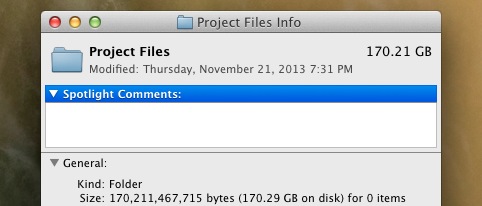It’s quite common for a client to request the delivery of all project files for a job upon completion of a contract. It seems like a pretty simple request on the surface, but the legalities of it get complicated quite rapidly, especially when the goal of a project is to quickly create high quality content at an economic price.
Project costs can get expensive. Consider for a moment that recent Pixar films have cost almost $2,000,000 for each minute of finished content, and recent Dreamworks films have cost $1,350,000 for each minute of completed product.
Needless to say, most private companies looking for 3D visualization cannot provide such budgets, but still need high quality results. In order to accommodate the 99% reduction in cost, shortcuts must be taken in order to save production time.
One of the best methods of saving time and cutting costs is by purchasing pre-made assets. Instead of creating custom 3D models and textures for each client, a contractor might invest in a pack of pre-made 3D models that they can then use for multiple projects later on.
For example – an animation project that requires an outdoor setting will probably require the use of 3D trees. A contractor might dedicate quite a bit of time and money to learn and master a specialty program such as SpeedTree ($495 – $4,995) or The Plant Factory ($495 – $1,495) that allows artists to make custom, high quality 3D tree models.
Or, the contractor could go onto a website such as Evermotion and purchase a package of 60 pre-made, high quality tree models for $165. This makes a lot of sense, as it saves the contractor (and in turn their clients) a good amount of money.
While the cost savings of using services such as Evermotion are quite apparent, they do present some legal issues if the client wishes to own the completed project files. Every purchase agreement for a 3D model pack states that while the 3D models may be used to create images and animations that can then be commercially sold to clients, the contractor who bought the 3D models (the license holder) cannot legally distribute the 3D models themselves to anyone else.
This means that if the contractor were to deliver the finished project files to their client at the end of production (project files that included portions of the 3D model pack), both the contractor and the client would be placed in legal trouble, as the contractor would have violated their agreement with the 3D model distributor, and the client would now knowingly be in the possession of illegal property without a license.
One solution to the dilemma might be for the client to spend the money needed to purchase their own license to the 3D models. However, rarely do complex animation projects require the use of only a single model pack. An outdoor scene will require trees, mountains, rocks, bushes, saplings, grass, and underbrush; indoor scenes could require hundreds of different objects depending on which room in the house we need to see.
Each of these models also requires accompanying materials and textures which are applied to the objects so that wood looks like wood and stone looks like stone. Many contractors have extensive libraries of calibrated materials and texture files which enable them to create realistic metal, wood, plastic, fabric, and just about everything else you can think of. Many of these textures have some form of rights protection (as they were pre-purchased), and while the final images that they help produce can be sold and given to clients, the raw files themselves cannot.
In addition, contractors frequently make use of plug-ins – or special, custom toolsets developed to dramatically speed up production time (i,e – reduce the price of the project) or to accomplish specific needs – such as simulating the movement of liquids and gasses, or even allowing for incredibly realistic rendered images. While these specialized toolsets can be used to generate images and video files that can then be sold to a client, the source code of the toolset cannot be distributed. Quite often, very important aspects of the project files are tied to the operation of these plug-ins, to the degree that the project file is rendered useless if the plug-in is not available.
Furthermore – most contractors consider the contents of their scene files to be intellectual property, as they have spent years of time developing very technical skills and setups, which means that the scene files are essentially filled with trade secrets. One could compare it to the manufacturers of Pepsi or Coke – who are more than willing to generate and sell you their bottled beverages at a low price; but they never would include their secret recipe on the back of every label.
Lastly – the file sizes can be massive, totalling in the hundreds of gigabytes in some cases, which would require the purchase of a special hard drive so that they could be sent to the client.
To summarize, if a client wants to stay legal, it isn’t always cost effective to require the delivery of the completed project files. Either the contractor will need to spend an excess of billable hours creating each and every project asset from scratch without the aid of any timesaving toolsets, or the client will need to purchase a license for every program, plug-in, texture file, and 3D model that the contractor decides to use if they’d like to make use of the project file in the future.
If you want to stay legal, keep the quality high, and keep costs within your budget range, your first step in doing so it to just leave project files out of the equation.
—
Luke Letellier

